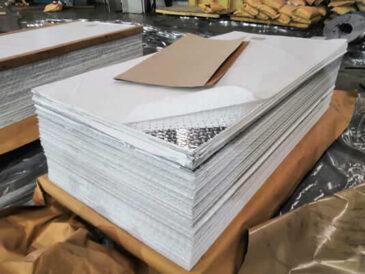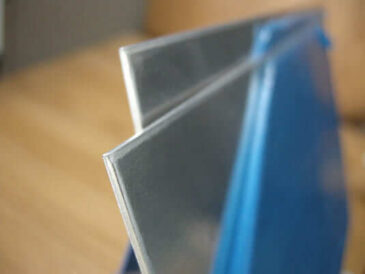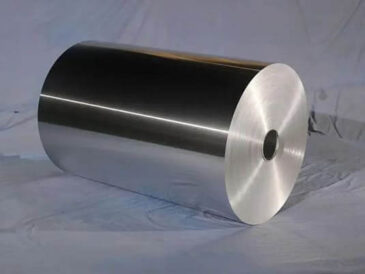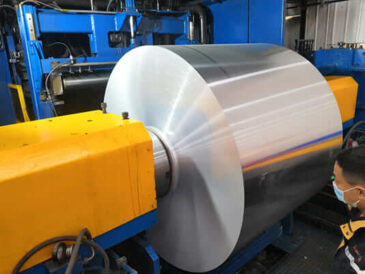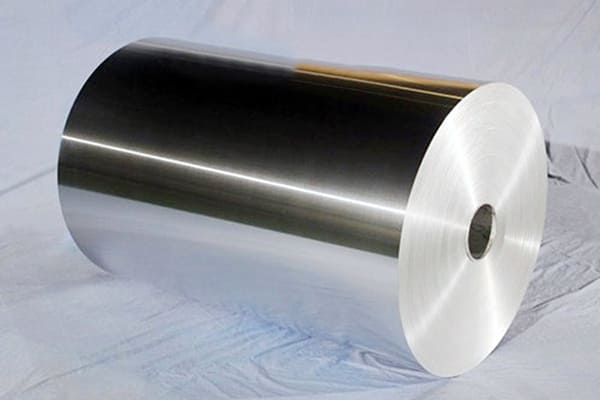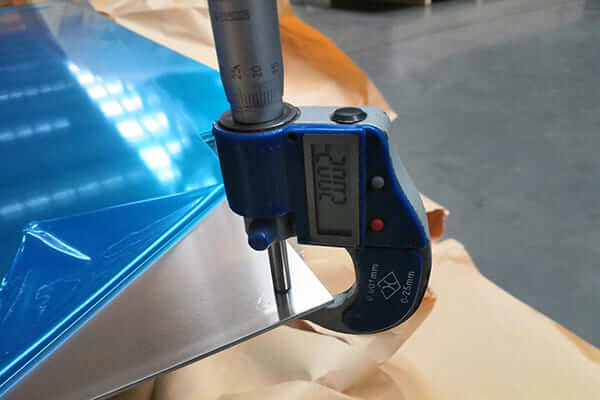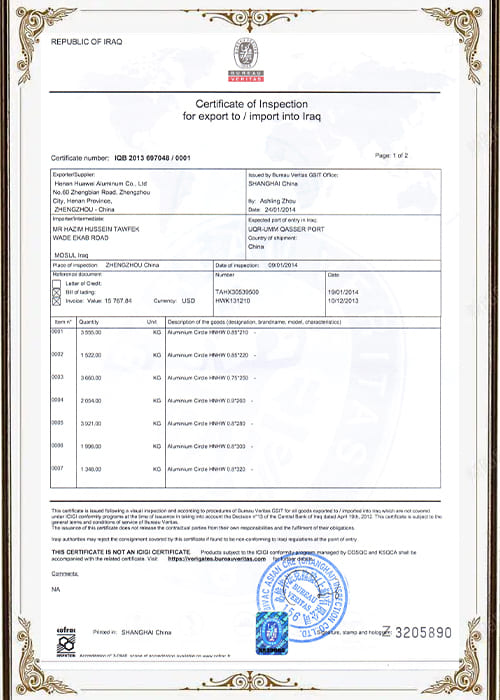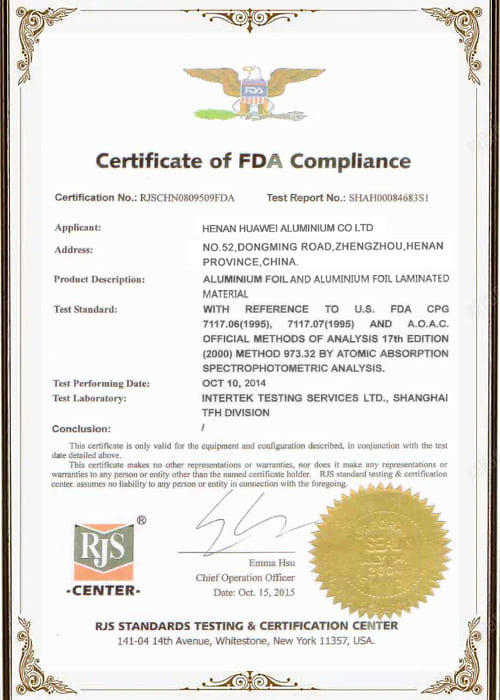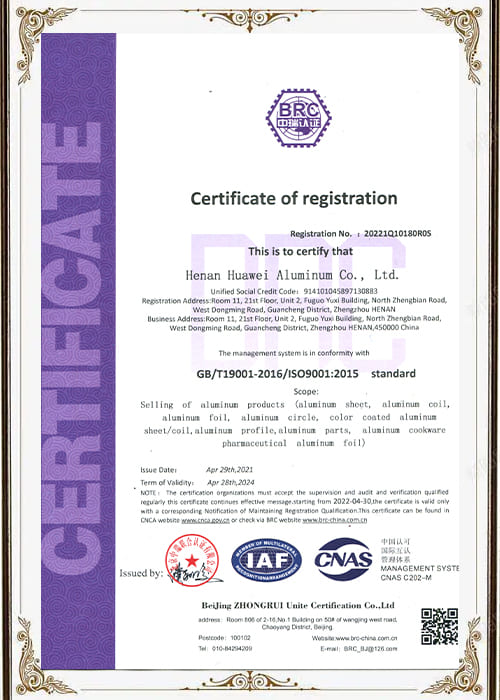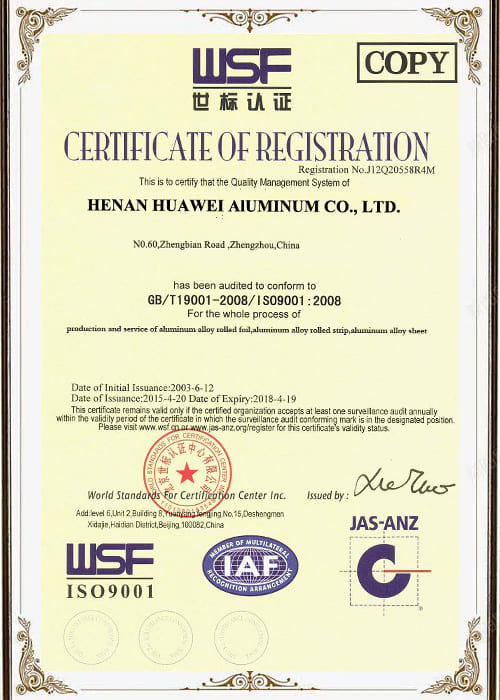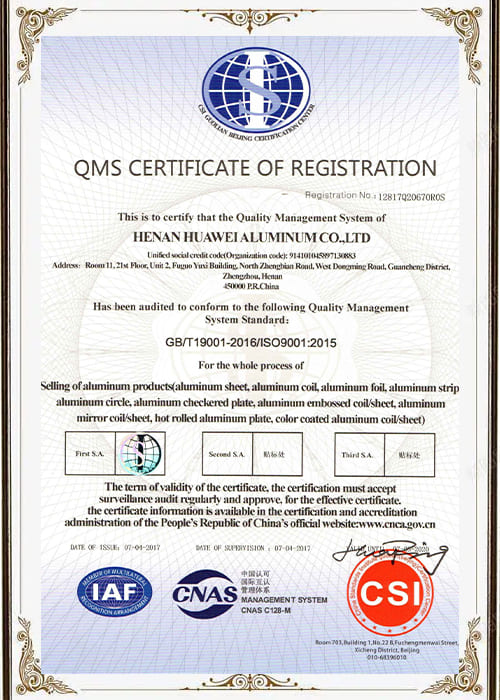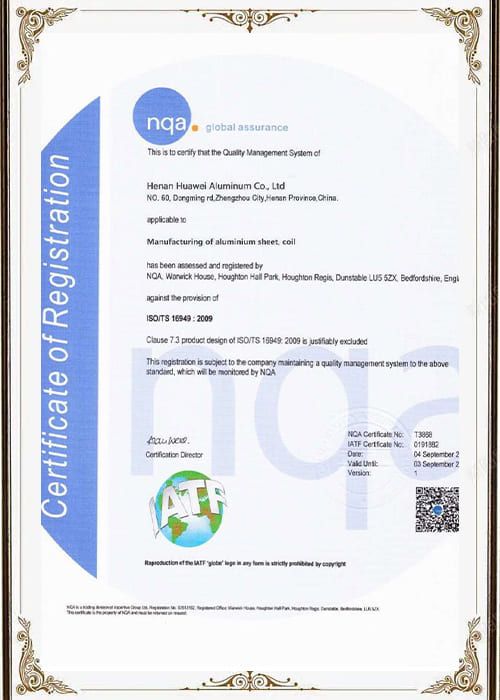1050 Aluminum Coil Introduction
The 1050 aluminum alloy is a commercially pure aluminum with excellent corrosion resistance, high thermal conductivity, and exceptional workability.1050 aluminum coil is widely used in various applications, ranging from construction to electronics, due to its versatility and desirable properties.
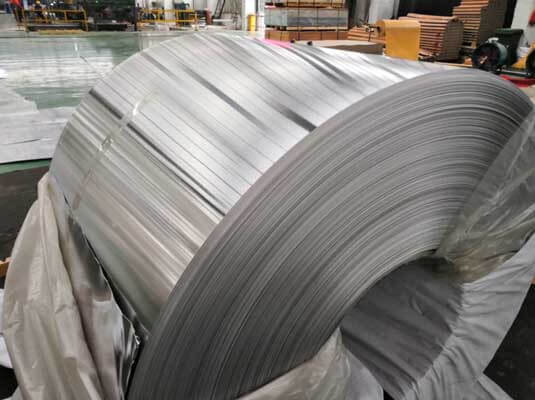
1050 metal pure aluminum
1050 Aluminum Coil Specifications
To ensure that our customers have access to a comprehensive range of 1050 aluminum coils, we offer various specifications and dimensions. Below is a detailed table showcasing the specifications of our 1050 aluminum coils:
| Alloy | Temper | Thickness (mm) | Width (mm) | Inner Diameter (mm) | Surface Treatment |
| 1050 | O, H12, H14, H16 | 0.2-6.0 | 20-2200 | 508, 505, 406, 305, custom | Mill finish, coated |
Chemical composition limits (%)
| Si Silicon |
Fe Iron |
Cu Copper |
Mn Manganese |
Mg Magnesium |
Cr Chromium |
Ni Nickel |
Zn Zinc |
Ti Titanium |
Others Each |
Total | Total Aluminum Min |
| 0.25 | 0.40 | 0.05 | 0.05 | 0.05 | – | – | 0.05 | 0.03 | 0.03 | – | 99.50 |
- Chemical composition is percent maximum unless shown as a range or a minimum.
- Source: Per DIN Specs.
- Information presented as a guide for reference purposes only and is not intended to be used for product design or application.
- Aluminum Association
Properties
The 1050 aluminum coil exhibits the following key properties:
- High Thermal Conductivity: Ideal for applications requiring efficient heat dissipation.
- Excellent Corrosion Resistance: Suitable for outdoor and marine environments.
- Outstanding Workability: Easily formed, welded, and machined to meet diverse requirements.
- Conductive and Non-Magnetic: Ideal for electrical applications where these properties are crucial.
Applications
1050 aluminum coil is a non-thermal action series produced in extruded profiles. It has excellent cold workability, brazeability, and weldability, and is strengthened by cold working. However, the automatic strength of 1050 aluminum coils is relatively low compared to alloy coils.
These properties make 1050 aluminum coils ideal for chemical and electrolytic brightening, but not for castings. Last but not least, moderate power and good anodizing quality make our products have a huge application.
Our 1050 aluminum coils find applications in various industries, including but not limited to:
- Construction: Roofing, cladding, and architectural elements.
- Electronics: Heat sinks, electronic components, and PCBs.
- Packaging: Aluminum cans, foils, and containers.
- Transportation: Automotive components and aircraft parts.

1050 aluminum coil is used in aluminum electronic parts
Certifications
Our commitment to quality is reflected in our certifications:
- ISO 9001: Quality Management System Certification.
- ISO 14001: Environmental Management System Certification.
- OHSAS 18001: Occupational Health and Safety Management System Certification.
Competitive Pricing
As a direct manufacturer and wholesaler, we eliminate unnecessary intermediaries, allowing us to offer competitive pricing without compromising on quality. This ensures that our customers receive excellent value for their investment.
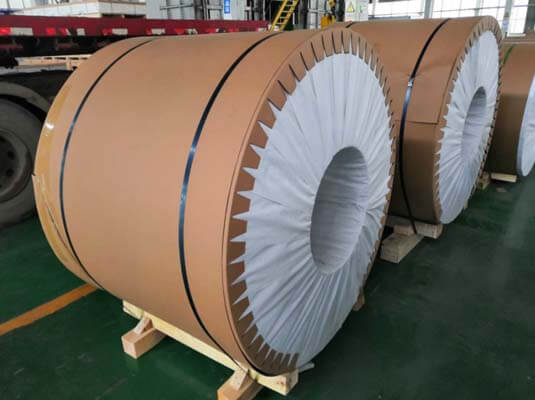
1050 Aluminum Coil Stock Supplier
What is the difference in performance between 1050 and 3003?
The performance differences between 1050 and 3003 aluminum alloys lie in their specific properties, making each alloy better suited for certain applications. Let’s break down the key performance differences:
1. Strength:
- 1050 Aluminum Coil:
- Strength: Relatively low tensile strength.
- Performance: Suitable for applications where high strength is not a critical factor.
- 3003 Aluminum Coil:
- Strength: Moderate strength.
- Performance: Ideal for applications requiring a balance between strength and formability.
2. Formability:
- 1050 Aluminum Coil:
- Formability: Excellent formability.
- Performance: Well-suited for processes like deep drawing and spinning.
- 3003 Aluminum Coil:
- Formability: Excellent formability, particularly in sheet form.
- Performance: Suitable for applications where shaping the material is important.
3. Corrosion Resistance:
- 1050 Aluminum Coil:
- Corrosion Resistance: Excellent corrosion resistance.
- Performance: Well-suited for environments where corrosion is a concern.
- 3003 Aluminum Coil:
- Corrosion Resistance: Good corrosion resistance, especially in mildly corrosive environments.
- Performance: Offers enhanced corrosion resistance compared to 1050.
4. Common Uses:
- 1050 Aluminum Coil:
- Applications: General sheet metal work, roofing, decorative applications.
- Performance: Suitable for projects where corrosion resistance and formability are crucial.
- 3003 Aluminum Coil:
- Applications: Beverage cans, cooking utensils, kitchen equipment.
- Performance: Ideal for applications requiring a balance of strength, formability, and corrosion resistance.
Casting production process and its introduction
The purpose of melting and casting is to produce alloys with satisfactory composition and high purity of melt, so as to create favorable conditions for casting alloys of various shapes.
Melting and casting process steps: batching --- feeding --- melting --- stirring after melting, slag removal --- pre-analysis sampling --- adding alloy to adjust the composition, stirring --- refining --- static Setting——Guide furnace casting.
Hot rolling production process and its introduction
- 1. Hot rolling generally refers to rolling above the metal recrystallization temperature;
- 2. During the hot rolling process, the metal has both hardening and softening processes. Due to the influence of deformation speed, as long as the recovery and recrystallization process is too late, there will be a certain work hardening;
- 3. The recrystallization of the metal after hot rolling is incomplete, that is, the coexistence of recrystallized structure and deformed structure;
- 4. Hot rolling can improve the processing performance of metals and alloys, reduce or eliminate casting defects.
- 1. The casting and rolling temperature is generally between 680°C and 700°C. The lower the better, the stable casting and rolling line usually stops once a month or more to re-stand. During the production process, it is necessary to strictly control the liquid level of the front tank to prevent low liquid level;
- 2. Lubrication uses C powder with incomplete combustion of gas for lubrication, which is also one of the reasons for the dirty surface of casting and rolling materials;
- 3. The production speed is generally between 1.5m/min-2.5m/min;
- 4. The surface quality of products produced by casting and rolling is generally relatively low, and generally cannot meet products with special physical and chemical performance requirements.
- 1. Cold rolling refers to the rolling production method below the recrystallization temperature;
- 2. There will be no dynamic recrystallization during the rolling process, and the temperature will rise to the recovery temperature at most, and the cold rolling will appear in a work hardening state, and the work hardening rate will be large;
- 3. The cold-rolled sheet and strip have high dimensional accuracy, good surface quality, uniform structure and performance, and products in various states can be obtained with heat treatment;
- 4. Cold rolling can roll out thin strips, but at the same time, it has the disadvantages of high energy consumption for deformation and many processing passes.
- 1. Finishing is a processing method to make the cold-rolled sheet meet the customer's requirements, or to facilitate the subsequent processing of the product;
- 2. The finishing equipment can correct the defects produced in the hot rolling and cold rolling production process, such as cracked edge, oily, poor plate shape, residual stress, etc. It needs to ensure that no other defects are brought into the production process;
- 3. There are various finishing equipments, mainly including cross-cutting, slitting, stretching and straightening, annealing furnace, slitter, etc.
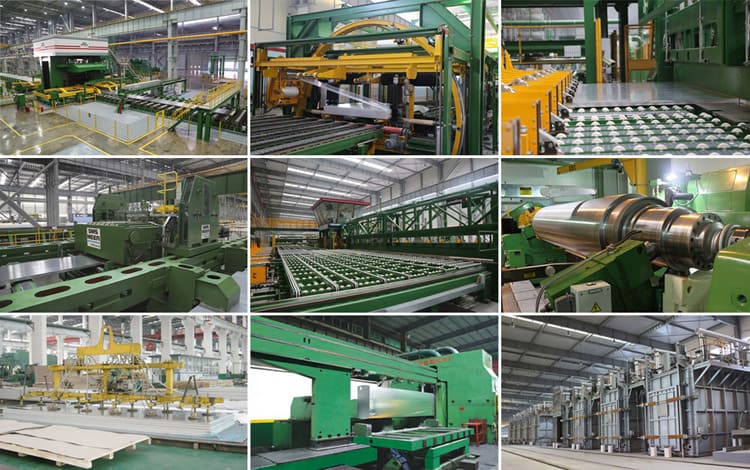
Casting and rolling process
Casting and rolling process: liquid metal, front box (liquid level control), casting and rolling machine (lubrication system, cooling water), shearing machine, coiling machine.
Cold rolling production process

Introduction to finishing production process
Aluminum alloy has the characteristics of low density, good mechanical properties, good processing performance, non-toxic, easy to recycle, excellent electrical conductivity, heat transfer and corrosion resistance, so it has a wide range of applications.
Aerospace: used to make aircraft skins, fuselage frames, girders, rotors, propellers, fuel tanks, wall panels and landing gear struts, as well as rocket forging rings, spacecraft wall panels, etc.
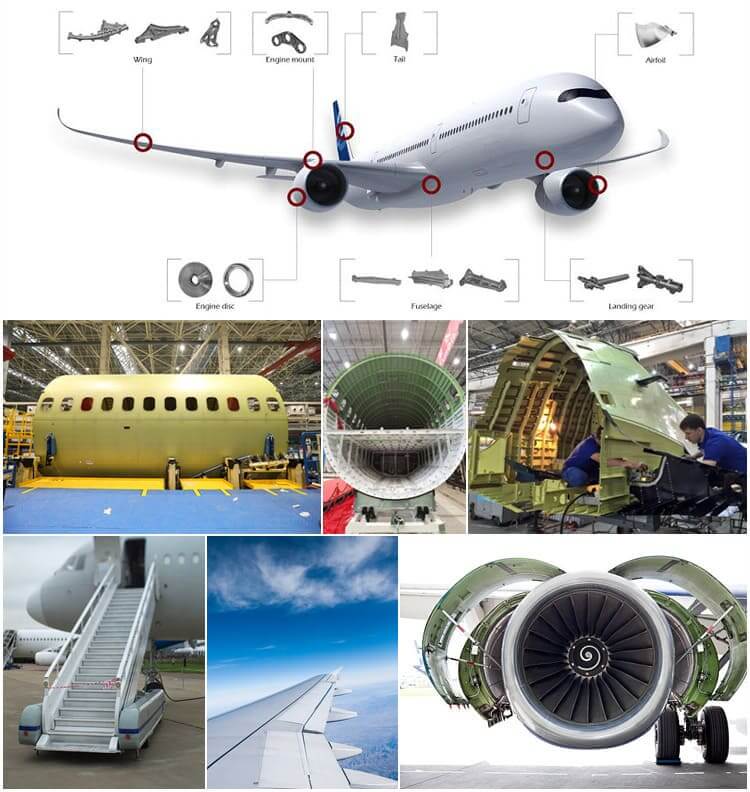
Aluminum alloy used for aerospace
Transportation: used for car body structure materials of automobiles, subway vehicles, railway passenger cars, high-speed passenger cars, doors and windows, shelves, automotive engine parts, air conditioners, radiators, body panels, wheels and ship materials.
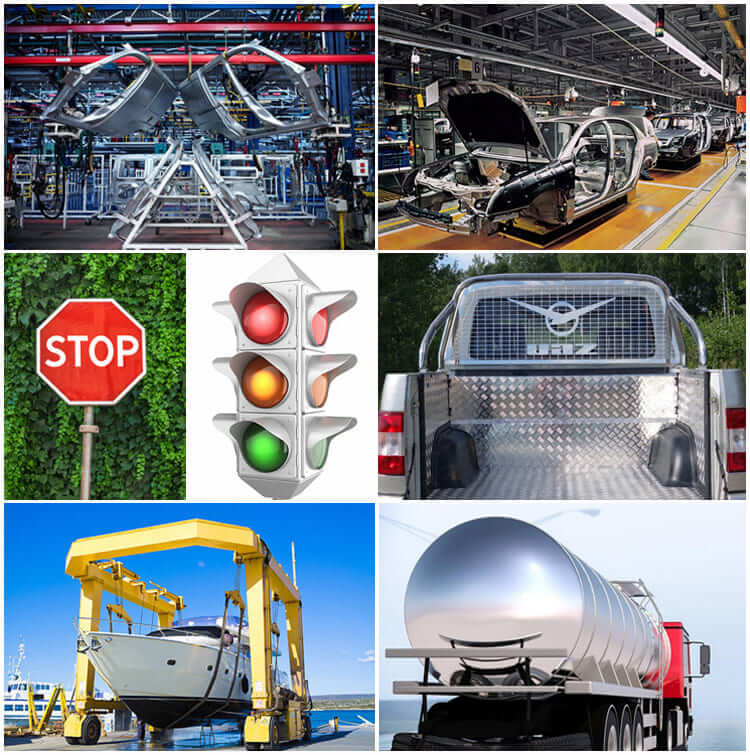
Traffic application
Packaging: All-aluminum pop cans are mainly used as metal packaging materials in the form of thin plates and foils, and are made into cans, lids, bottles, barrels, and packaging foils. Widely used in the packaging of beverages, food, cosmetics, medicines, cigarettes, industrial products, medicines, etc.
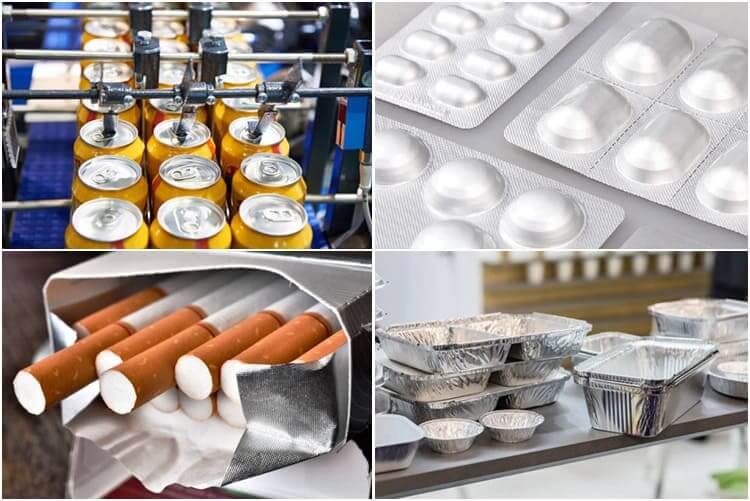
Packaging application
Printing: Mainly used to make PS plates, aluminum-based PS plates are a new type of material in the printing industry, used for automatic plate making and printing.
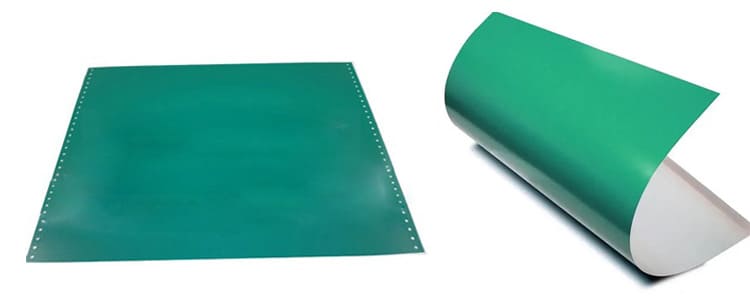
PS printing
Architectural decoration: aluminum alloy is widely used in building structures, doors and windows, suspended ceilings, decorative surfaces, etc. due to its good corrosion resistance, sufficient strength, excellent process performance and welding performance.
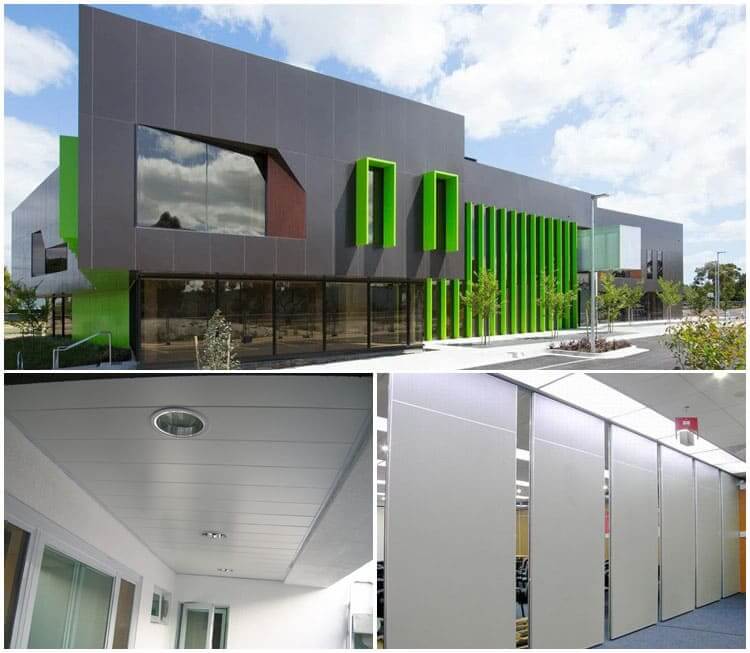
Aluminum alloy construction application
Electronic products: computers, mobile phones, refrigerator shells, radiators, etc.
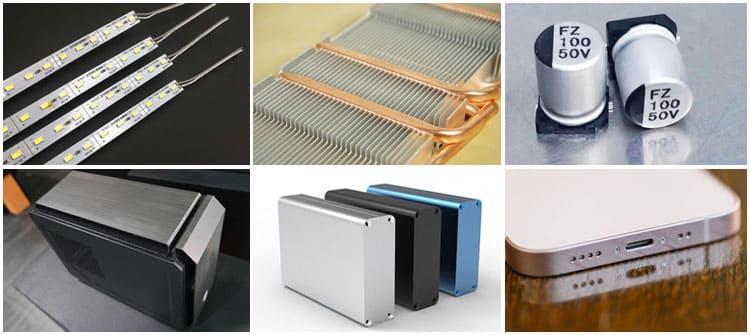
Electronic product application
Kitchen supplies: aluminum pots, aluminum basins, rice cooker liners, household aluminum foil, etc.
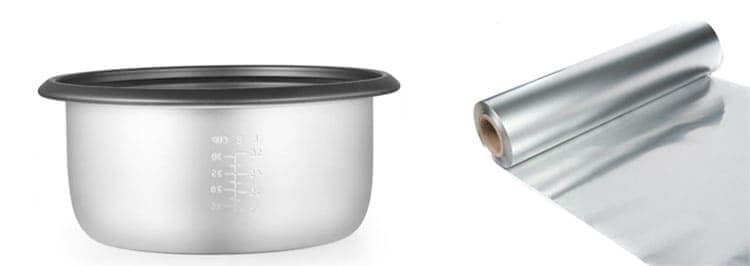
Kitchen application
Packaging Of Aluminum Sheet/Coil
Every detail of packaging is where we pursue perfect service. Our packaging process as a whole is as follows:
Lamination: clear film, blue film, micro-mucosal, high-mucosal, laser cutting film (2 brands, Novacell and Polyphem);
Protection: paper corner protectors, anti-pressure pads;
drying: desiccant;
Tray: fumigated harmless wooden tray, reusable iron tray;
Packing: Tic-tac-toe steel belt, or PVC packing belt;
Material Quality: Completely free from defects such as white rust, oil spots, rolling marks, edge damage, bends, dents, holes, break lines, scratches, etc., no coil set.
Port: Qingdao or other ports in China.
Lead time: 15-45 days.
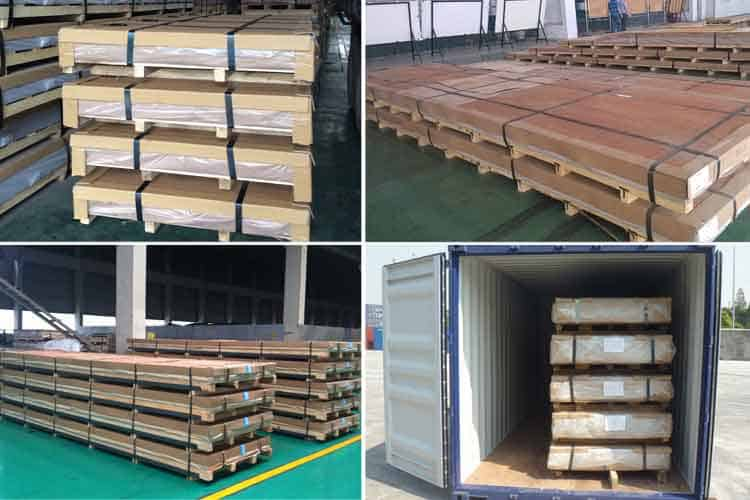
Aluminum sheet/plate packaging process
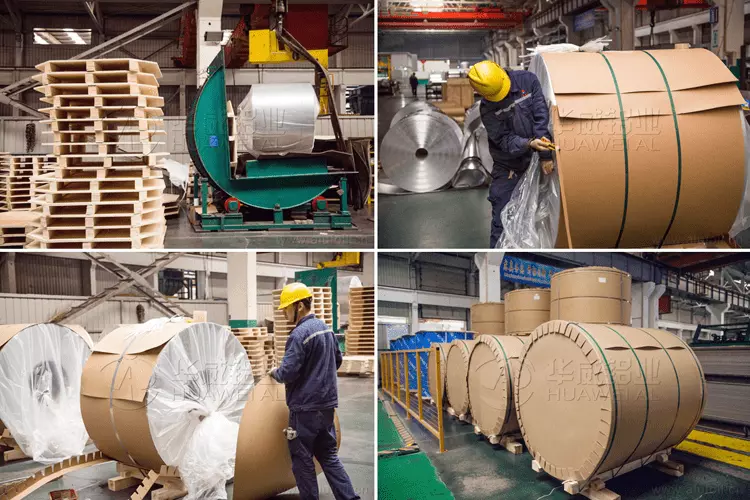
Aluminum coil packaging process
F: Are you a manufacturer or a trader?
Q: We are a manufacturer, our factory is at No.3 Weier Road, Industrial Zone, Gongyi, Henan, China.
F: What is the MOQ for ordering the product?
Q: Our MOQ is 5 tons, and some special products will have a minimum order quantity of 1 or 2 tons.
F: How long is your lead time?
Q: Generally our lead time is about 30 days.
F: Do your products have quality assurance?
Q: Yes, if there is a quality problem with our products, we will compensate the customer until they are satisfied.
Related Products
Latest Blogs
6061 vs 7075 aluminum
"6061" and "7075" are two common aluminum alloy grades, which are widely used in many industrial fields, especially in aviation, aerospace, transportation and structural manufacturing.
Aluminum Foil Used in Air Fryers
Aluminum foil is widely used in daily life, mainly due to its light weight, good ductility, moderate price, and excellent heat conduction and light-shielding properties.
Reasons why the surface of honeycomb aluminum foil cannot be bonded with the adhesive
Aluminum honeycomb panels have good performance in use. They have good strength and good impact resistance. They can be well designed in use. Therefore, they are widely used at present.
Introduction hardness of 1000-8000 series aluminum alloys
1000-8000 series basically covers all aluminum alloy series products. Different series of products have different performance and hardness.





